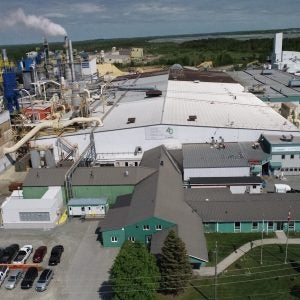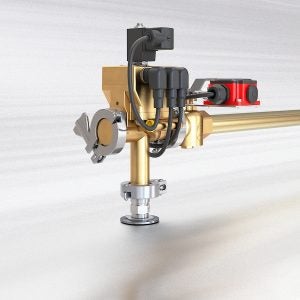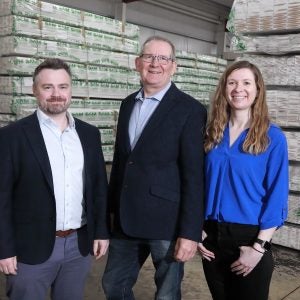It started with a vision: an exhibition like a marketplace, an interface of supply and demand, the forum for face-to-face discussions. Away from the glitter of the usual large trade fairs, away from everything which might blur the vision, ZOW encourages concentration.
ZOW, the furniture components trade fair in East-Westphalia, wanted to be different and to go its own way. Furniture suppliers from Germany and abroad are now able to exhibit their latest introductions right at the heart of the Westphalian furniture manufacturing region in a relaxed and open workshop-like atmosphere.
Uniform display stands, without hindrance from walls, provide an ideal environment from which to develop new contacts, new ideas and to display the latest products.
Since the first ZOW in spring 1995, the number of exhibitors and visitors – and the available space in the Bad Salzuflen exhibition centre – has increased more than tenfold. In 1995, there were 49 exhibitors from 11 countries; there were 1,400 trade visitors and exhibitor space took no more than 2000m2.
Some 15 exhibitions later, 2009 boasted 618 exhibitors from 283 countries. There were 15,200 trade visitors in an area of 35,000m2.
Coming right up to date with ZOW 2011, taking place between February 14 and 17, it appears that the key topic at this show will be lightweight construction.
Igel, the Herford-based Interessengemeinschaft Leichtbau eV (Interest Group for Lightweight Engineering), an organisation of numerous companies with competence in lightweight construction, has been represented with its own exhibition area within ZOW since 2009.
For 2011 the presentation area will be expanded. Audiences will be able to take a close look at recent developments for the furniture industry in hall 22.2. Large and small igel member companies and institutes will showcase their know-how and their latest product solutions.
Axxor, Döllken, Jowat, Hettich, Swap and Torwegge will be some of the exhibiting Companies.
For the first time, igel members will be able to use larger booths in hall 22.2, along with information booths. The flexible concept will create a new quality of presentations and make the introduction of lightweight solutions even more accessible.
Here, both young and renowned companies from the international supplier industry will impressively showcase the various types of development potential, with smart lightweight construction solutions for the furniture and furnishing world. Additionally, universities will provide information about their recent research projects. The funded project “Leichtbauoffensive OWL(“OWL lightweight construction campaign”), initiated by igel, will also be part of the event.
Lower transport, energy and packaging costs are not the only key factors that make lightweight construction solutions interesting for the furniture industry, interior design, trade fair construction and shop fitting.
Due to intelligent engineering solutions, lightweight construction is synonymous with significant value-appreciation in the construction of furniture across the entire value chain.
Manufacturers are developing new wood composites which offer a high level of stability in spite of their low weight. These new wood based panel materials are driving forward the development of novel connection technologies for screws, glues or plugs.
Other aspects are the ongoing miniaturisation of components, such as fittings, and the integration of technology – hollow boards provide the necessary space for constructions that can be hidden from sight in the furniture.
This will cause significant changes in furniture design and functionality and thus create a new buying incentive for customers. Hence, competence in lightweight construction is synonymous with having a technological advantage, also in terms of global competitiveness.`
As every year, Alpi will be at the ZOW 2011 event in Bad Salzuflen.
The Alpi Group is a world leader in the production of multi-laminar wood, which it manufactures by means of exclusive technology that permits the appearance of any type of natural wood to be reproduced using wood originating from rapid-growth plantations or forest concessions held by the company’s subsidiary Alpicam.
The Alpi Group says it respects the strictest ‘codes of conduct’, recognising that forests are a renewable source of raw material and, more importantly, common resources.
The headquarters of Alpi is located in the small town of Modigliana in the Apennine mountains in Italy’s Emilia-Romagna region. The original cabinet making company that would subsequently evolve into a world leader was set up here in 1919.
The group’s concessions in African tropical forests (more than 500,000ha in Cameroon and 100,000 in the Ivory Coast) are a crucial part of Alpi’s operations as they are the first step in the processes leading to the production of Alpi’s boards, veneers, edgebandings and laminated sheets.
The Italian operations centre on the Alpi Wood Division, a facility that extends over an area of 150,000m2 and employs a workforce of more than 6,450.
It was here in 1961 that Alpi first produced Alpilignum, the reconstituted wood that became the group’s flagship product.
For several years now this product has also been manufactured in Cameroon, testifying both to the maturity achieved by the overseas facilities and to the group’s strategy of organising its production activities in such a way as to exploit opportunities and synergies.
An offshoot of this original theme is the Alpilignum Collezione. Only a year after its introduction, the collection is already expanding.
The collection, which can be seen at Bad Salzuflen, offers a selection of Alpi veneers that are always available in any quantity desired, ready for delivery to any location.
Alpi says the collection’s effectiveness and efficacy were immediately recognised by the world of interior and contract design, as it provides a concrete, targeted solution for those who design and manufacture furniture, windows, doors and interior coverings.
As a result of this success, Alpi decided to expand and enhance the collection by adding woods that reflect the latest and most sophisticated trends in design, such as the elegant new Ammara Ebony, or the new Grey Oak finishes, which it says are particularly stylish and versatile.
The new range features 16 woods including: American Walnut, Indian Rosewood, Wenge, Ebonies, Oaks, Zebrawood and Teak.
As with all the company’s products, the woods used to manufacture the Alpilignum Collezione have a controlled origin and FSC certification.
And a final touch from ZOW organisers, Survey GmbH, is that from now on, visitors and exhibitors to Bad Salzuflen will be able to use a free ZOW-iPhone Application, available in the ‘App Store’. The tool makes it possible to search for exhibitors offline, to look up directions via GoogleMaps and to receive a complete service overview with all relevant information about the fair






